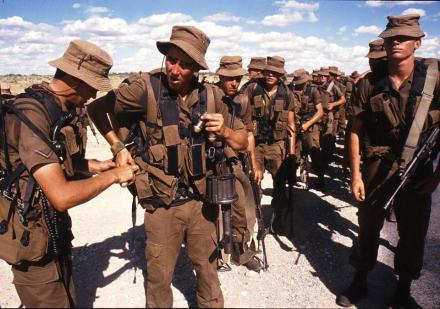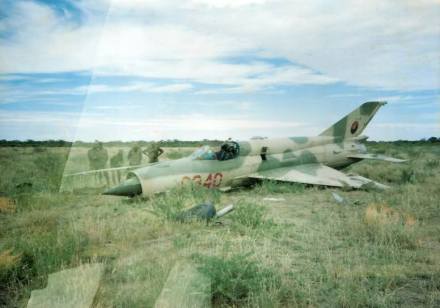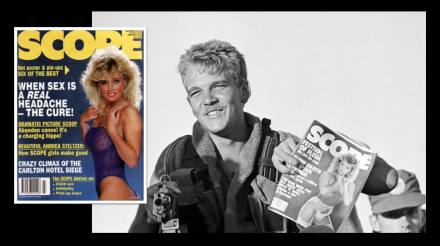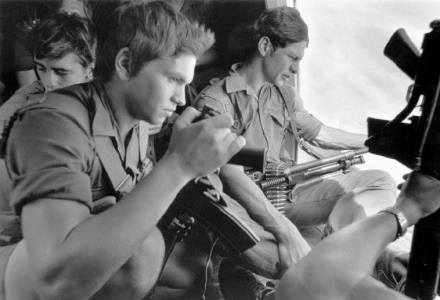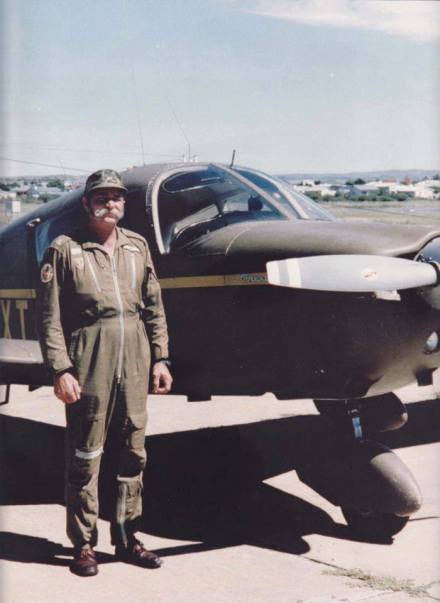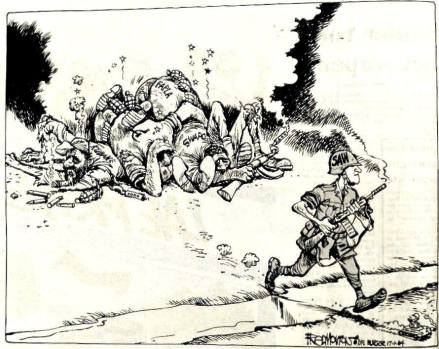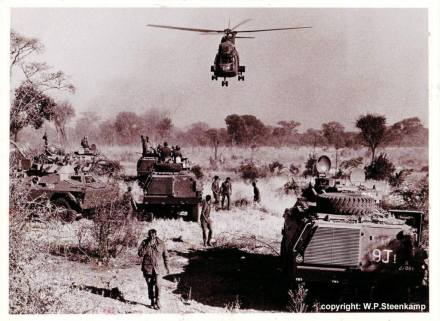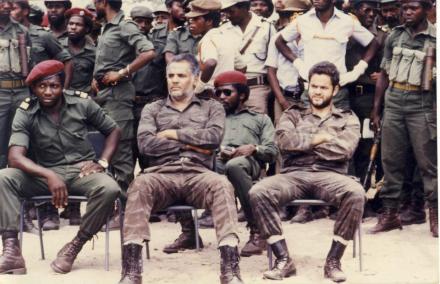Infantry section seen here during South West Africa and Angola Border War. This is a SADF patrol final inspection (thought to be 5 SAI), this task was usually performed by the section leaders before the platoon moves out. His job was to check that every man’s kit is in full order. Here he checks the ammunition and kit of the man allocated the 40 mm multiple grenade launcher.
Infantry sections like this were made up of 10 men comprising a section leader – usually a corporal, two machine gun groups – LMG (Light machine gun) and one man on the multiple grenade launcher (MGL) in the rifle group.
Three Infantry sections made up a Platoon headed which report to a HQ group of 5 men, including a Platoon Commander (usually a Lt or 2Lt) and a Platoon Sergeant. Total platoon strength 35 men.
The MGL (Multiple Grenade Launcher) is a lightweight 40 mm six-shot revolver-type grenade launcher (variations also fire 37/38mm) developed and manufactured in South Africa by Milkor (Pty) Ltd. This MGL was the world’s first mass-produced multi-shot 40mm hand-held weapon.
The MGL was demonstrated as a concept to the South African Defence Force (SADF) in 1981. The operating principle was immediately accepted and subjected to a stringent qualification program. The MGL was then officially accepted into service with the SADF as the Y2. After its introduction in 1983, the MGL was gradually adopted by the armed forces and law enforcement organizations of over 50 countries. Total production since 1983 has been more than 50,000 units.
The MGL is a multiple-shot weapon, intended to significantly increase a small squad’s firepower when compared to traditional single-shot grenade launchers like the M203. The MGL is designed to be simple, rugged, and reliable. It uses the well-proven revolver principle to achieve a high rate of accurate fire which can be rapidly brought to bear on a target. A variety of rounds such as HE, HEAT, anti-riot baton, irritant, and pyrotechnic can be loaded and fired as fast as the trigger can be pulled; the cylinder can be loaded or unloaded rapidly to maintain a high rate of fire. Although intended primarily for offensive and defensive use with high-explosive rounds, with appropriate ammunition the launcher is suitable for anti-riot and other security operations. A newly patented modification allows the MGL to fire less lethal (very low pressure) rounds.
Photo copyright John Liebenberg, sources Wikipedia and Defence Network.

